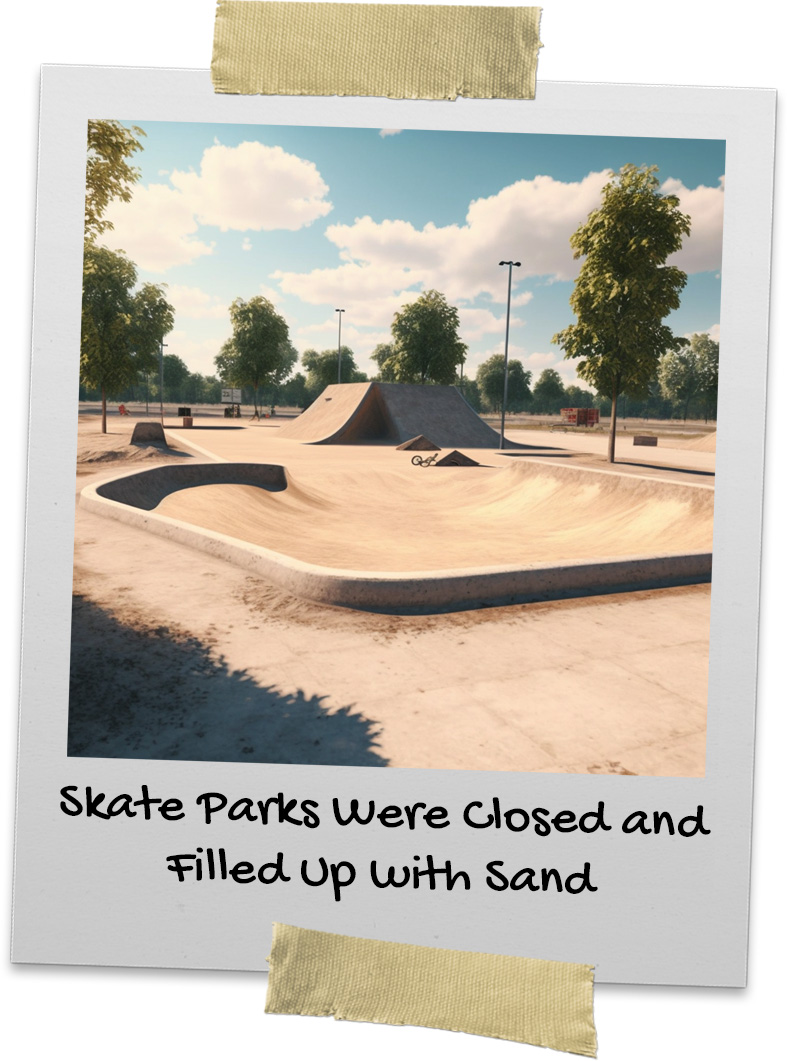Skate Parks Were Closed and Filled Up with Sand


COVID-19 arguably hit our nation’s youth the hardest. They went through one of the most difficult school years possible. They went long periods of time without sports or extracurricular activities. Many families prevented their kids from getting together with their friends. A lot of popular youth hangout locations, such as parks, movie theaters, and malls were all shut down or severely restricted. Many youths were forced to sit at home and crush Netflix and Call of Duty, in an endless loop of monotony.
It was time to get the youth out of the house!
For those who enjoyed skateboarding, skateparks were an oasis in a dessert of conformity. In the 1950s, skateboarding was created created in Southern California, as an off-shoot of surfing, for something to do when the waves weren’t crashing.
The popularity of the sport continued to skyrocket over the next several decades. In 2020, for the first time, skateboarding was an Olympic event (those Tokyo games were delayed until 2021, due to the pandemic).
With over 3 million youth skateboarders, the number of skateparks in America rose to over 3,500 in 2019, with over 77% of those using the parks being age 18 and under.
Skateparks are a place where the youth can go and hang out with their friends. They use it as a place to develop their athletic skills, build self-confidence, and strengthen social bonds. To them, skateparks mean everything. During the pandemic, many municipalities decided that the skater’s haven needed to be shut down to slow the spread of the disease.
Rather than just post signs, many cities went to the extra measure to bring in sand by the tonnage and cover the whole skatepark with an unavoidable obstacle. Because, you know, we can’t trust the kids to obey rules. For these youth, their identity was in a real way erased, and the sanctuary where they could be among their peers during a very frustrating, trying time was eliminated.



